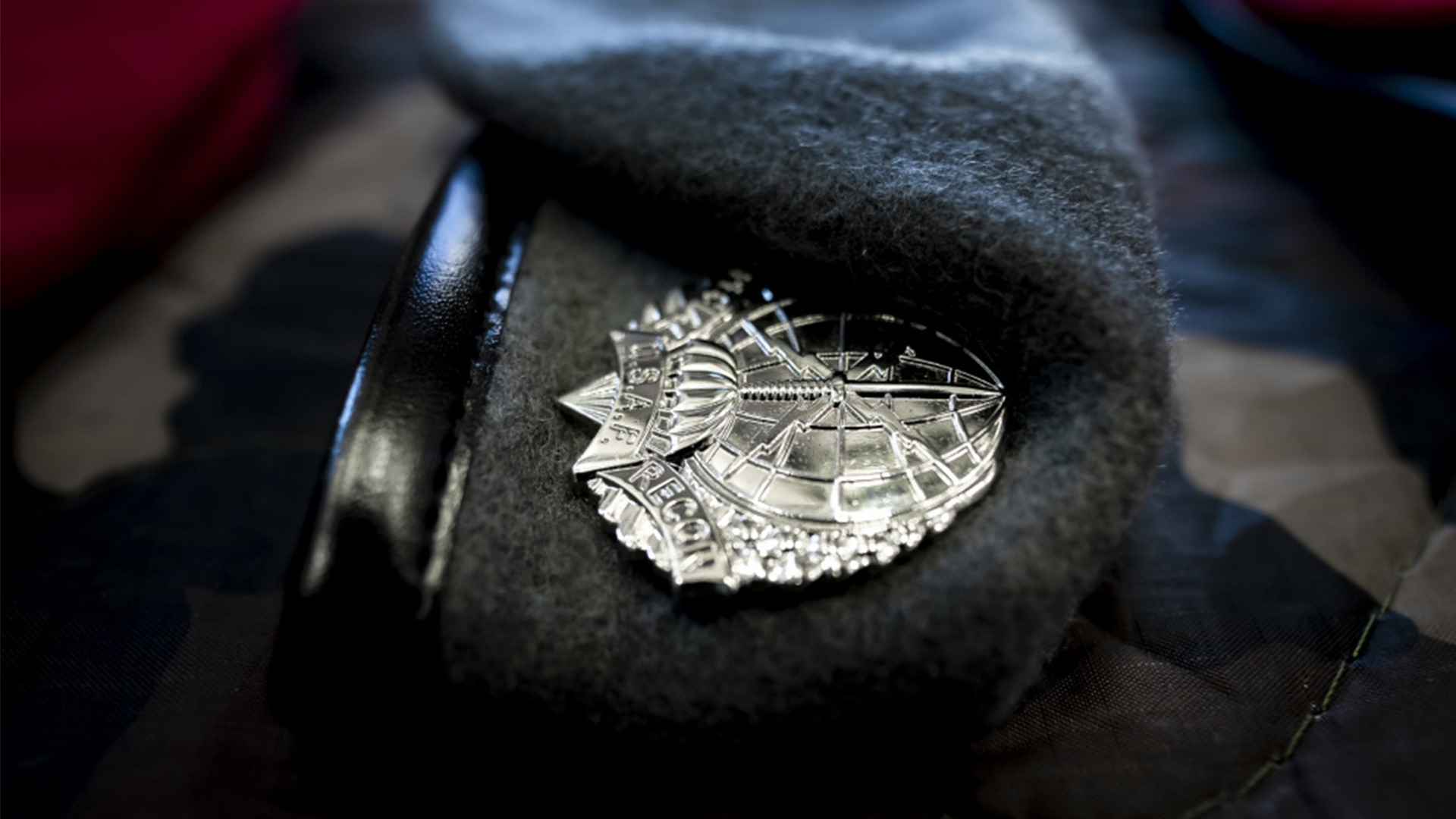

It’s not every day that the first graduates of a new special warfare school roll off the line, but that’s what happened on Thursday at Pope Army Airfield, North Carolina when an undisclosed number of students received their grey berets to become Special Reconnaissance airmen.
Special Reconnaissance is the new job title for what used to be called Special Operations Weather Teams, the meteorology experts who infiltrate hostile territory to gather and forecast weather conditions for special operations teams or air support. The SR career field underwent a major restructuring recently that keeps short-term weather forecasting in the job’s skillset, but it is no longer the main focus.
“Today’s SR graduates are better equipped with unique training to conduct multi-domain reconnaissance and surveillance with an eye towards gaps identified in the Department of Defense’s long-range reconnaissance and force projection capabilities,” said Maj. Spencer Reed, 352nd Special Warfare Training Squadron commander, in a recent Air Force news release.

Specifically, SR airmen are trained in surveillance and reconnaissance, multi-domain electronic warfare, long-range precision engagement and target interdiction, small unmanned aircraft systems, preparation of the environment, personnel recovery, and advanced special tactics skills. In plain English, that means the Air Force swapped out the weather-centric training for more general reconnaissance skills emphasizing electronic warfare and unmanned aircraft.
When the Air Force first announced the changes in May 2019, Air Force Times reported that it was part of a broader shift away from counter-terrorism operations in the mountains of Afghanistan, where weather changes could happen suddenly, to a more general recon skillset needed for fighting Russia or China.
Special reconnaissance “will truncate [special operations] weather training with a shift in focus from long-term regional forecasting to short-term, small-scale, team-specific environmental reconnaissance with an emphasis on special recon as a whole,” Air Force Master Sgt. Thomas Howser, a career assistant functional manager for special reconnaissance, told Air Force Times.

Special reconnaissance is one of several jobs within the Air Force special tactics community. The others include pararescuemen (PJs), who are combat search and rescue experts; tactical air control party (TACP) airmen, who are experts at calling in air strikes; and combat controllers (CCTs), FAA-certified air traffic controllers who can call in air strikes and set up impromptu airports in remote, hostile areas. The intent is for special reconnaissance to provide information that helps the other parts of the Air Force ST team, and the military’s special operations community as a whole, do their jobs.
“SR airmen train to provide global battlespace awareness and access by translating information into actionable intelligence,” the Air Force said. “In the battlespace, SR airmen are part of Special Tactics teams in sensitive, forward operating locations, focused on global strike, global access and recovery missions.”
The graduates who donned their grey berets on Thursday have already been in the special warfare pipeline for nearly a year. According to the Air Force recruiting website, the lengthy training regime for SR begins the same way as Air Force CCT and PJ training: airmen undergo eight weeks of special warfare prep, where they undergo strength and conditioning training, rucking, running and swimming; four weeks of special warfare assessment and selection; four weeks of pre-dive school; five weeks of dive school; three weeks of airborne school; four weeks of military free-fall training; and three weeks of survival, evasion, resistance and escape training. Then, after all that, they are finally ready for special reconnaissance-specific training.
Related video: How do Air Force special operations operate?
The specific training includes an eight-week special reconnaissance course where airmen learn how to infiltrate the battlefield and collect data. Next are eight weeks of the SR apprentice course, where airmen “learn to apply their training under pressure while obtaining fundamental combat skills,” according to the Air Force recruiting website. The skills include demolition, communication and signaling, human intelligence gathering and tactical cyber applications.

The apprentice course was what the first wave of students just graduated from at Pope Army Airfield on Thursday. All told, the training to become an SR airman is 47 weeks long, which is just shy of a year. But that doesn’t include the eight weeks of basic training that all airmen must complete, and the six months of special tactics training that follows the SR apprentice course.
With all that training under their belts, it’s no stretch to say that special reconnaissance airmen are ready to kick some tail feathers.
“This ceremony not only celebrates the first organically trained SR airmen in our wing, but in the U.S. Air Force,” said Reed, the 325th Special Warfare Training Squadron commander. “I’m incredibly proud.”